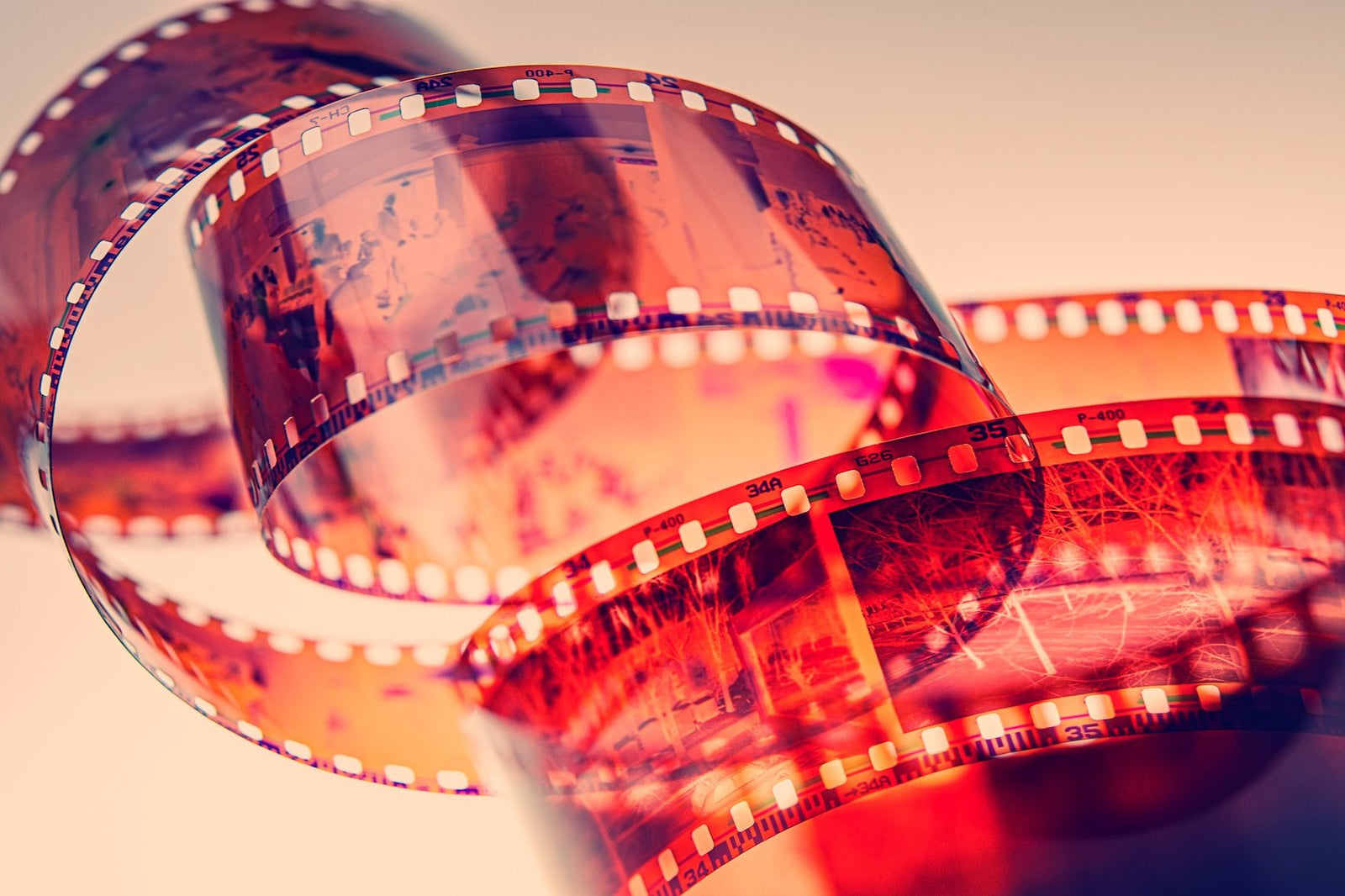What Is a Film Negative?
June 16, 2021

While film photography might not be in vogue today, when George Eastman introduced the first negative film rolls made of flammable plastic in 1889, it revolutionized photography. Negatives made of a safer and lighter type of plastic called acetate were introduced 14 years later.
The most notable innovation was the color film Kodachrome, introduced in 1936. Due to its rich and true color quality, Kodachrome enjoyed status as the best color negative film for nearly 75 years until it was discontinued in 2010 due to digital photography’s popularity.
What are Film Negatives?
Photo negatives are made of transparent plastic with one side covered with a light-sensitive material called emulsion. Negatives are loaded into your camera and exposed to light. This creates a reverse image, so light areas look dark and dark areas look light on negatives. Color negative films are more complex, so they have multiple layers. They appear primarily red when you look at them, but all the colors are visible when they’re printed.
How Negatives Were Processed
Traditionally, negatives were developed, hung to dry, then cut up into strips and put in negative sleeves. They were then printed and enlarged in a dark room with trays of chemicals or mass-printed in standard sizes of 3.5 x 5 and 4 x 6 inches by commercial labs. This process created a positive image that resembled the photographed scene. At one time, quite a few amateur photo hobbyists developed black and white film negatives and made prints in home darkrooms. The average family either took film to their local drug store to be processed or sent it in mailers you could find everywhere by the 1970s.
What to Do with Old Camera Negatives
When stored properly, photo negatives can be used to reproduce images repeatedly. Black and white negatives typically hold up quite well, although they are subject to scratches and some deterioration. Even when stored properly, color negatives fade and change color, often taking on otherworldly hues.
With the advent of film scanners, you can now create digital images from old negatives and print them either commercially or on home inkjet printers. The problem is that film negatives often suffer from years of neglect, and it takes expensive professional equipment and photoshopping skills to restore them to their former glory. At ScanDigital, our technicians use state-of-the-art scanning equipment to manually scan your photo negatives, including color correcting and scratch reduction. You'll receive forever digital images you can print and share without worrying about the ravages of time.Leave a comment
Comments will be approved before showing up.
Also in Blog

How to Enlarge a Picture for Printing
July 20, 2021

How to Make a Digital Photo Album
July 20, 2021

How to Share Digital Media
July 20, 2021
Purchase
CONNECT
We're here to help!
For All General Inquiries:
Phone: 888.333.2808
Email: info@scandigital.com
Business Hours (EST):
Monday - Friday: 9:30am - 5:30pm
ScanDigital Chicago
(Drop-Off & Pick-Up Only):
Phone: 888.324.6436
Business Hours (CST):
Monday - Friday: 10:00am - 4:00pm
News & Updates
Sign up to get the latest on sales, new releases and more…
© 2025 ScanDigital, Inc..
